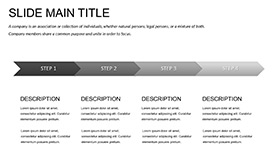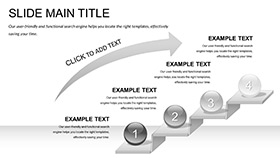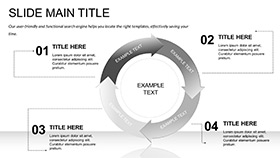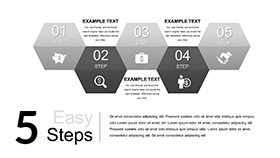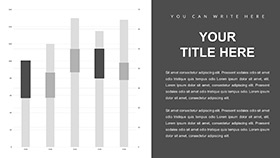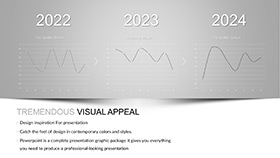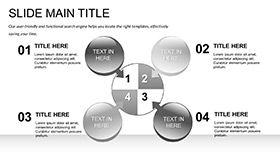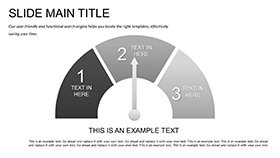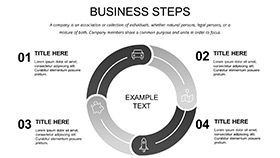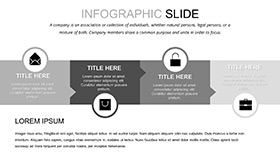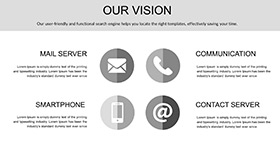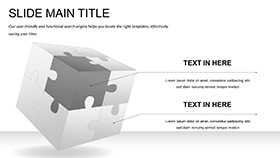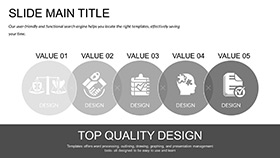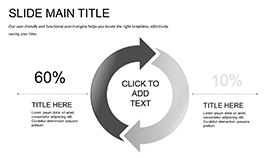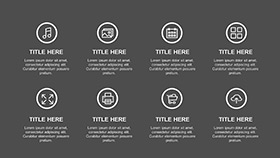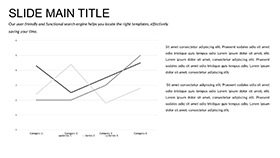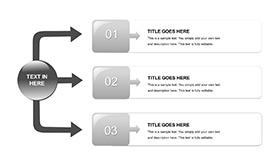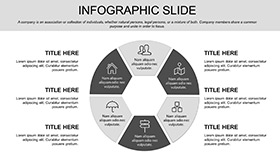Every scientific leap starts with a question, unfolds through rigor, and culminates in revelation - that's the arc this Keynote Template traces with precision. The Lab Report or Scientific Discovery Keynote Template structures your story along IMRAD lines (Introduction, Methods, Results, Discussion), arming researchers, clinicians, and scholars with 28 diagrams, three masters, backgrounds, and seven color schemes. Seamless in Keynote from 2016, it distills experiments into digestible visuals, from gene sequencing to climate modeling.
It's crafted for those unearthing truths - med students chronicling trials, ecologists decoding habitats, or physicists probing particles - who seek to convey not just facts, but the thrill of discovery. Envision a conservationist layering satellite data over field notes, or a pharmacologist sequencing adverse events: the template illuminates pathways, turning solitary insights into shared epiphanies.
Framework Features Aligned to Discovery
Mirroring research rhythms, slides scaffold from hypothesis hooks to implication echoes, with aids like tables for raw logs and symbols for conceptual anchors.
Methods and Procedures Illuminated
Procedure flows chart controls and variables, with modular blocks for iterations. Insert procedural timelines, animating phases to replay your lab dance.
- Sequence Diagrams: Step-by-step for protocols, like titration curves.
- Variable Tables: Grid placeholders for conditions, sortable columns.
- Symbol Vault: Discipline icons - pipettes for chem, leaves for bio - to mark stages.
Such scaffolding supports audit trails in peer reviews.
Results Rendered Vividly
Findings bloom in tailored graphs: histograms for distributions, vectors for trajectories. Link to appendices for deep dives, surfacing patterns with subtle highlights.
- Load assay outputs into plot fields, auto-fitting scales.
- Overlay confidence intervals as shaded bands for nuance.
- Shift palettes - crisp whites for labs, verdants for fields - to evoke contexts.
A clinician might vectorize recovery arcs, pinpointing therapeutic thresholds.
Tracing Discoveries in Practice
In journals-to-talks transitions, it condenses manuscripts into slide symphonies. For fieldwork, embed geo-tags in discussion maps, debating implications on the fly.
Med rounds network case studies, while student labs sequence error analyses, learning from stumbles visually.
Conference Chronicles
Frame abstracts as slide spines, with discussion prompts inviting dialogue. Keynote builds unveil results incrementally, mirroring experimental reveals.
Handout PDFs carry embedded links to datasets, extending conversations.
Review and Reflection Aids
Post-presentation, duplicate for grant narratives, tweaking emphases. In teaching, it guides dissections, from query to query.
Discovery Delivery Insights
Honor the method by voicing uncertainties in notes, balancing triumphs with caveats. Optimize for venues with high-contrast exports, ensuring details endure.
Fuse with reference managers for citation slides, upholding rigor. This template chronicles quests - claim the Lab Report or Scientific Discovery Keynote Template for $22 and author your chapter.
Frequently Asked Questions
Why IMRAD structure?
It mirrors standard scientific reporting, easing transitions from paper to presentation.
Support for visual aids?
Extensive - infographics, photos, and symbols integrated throughout.
Editing for specific fields?
Flexible placeholders adapt to bio, physics, or env specifics.
Animation options?
Layered builds for progressive disclosures, like result rollouts.
Export capabilities?
PDFs, videos, and images for versatile sharing.






